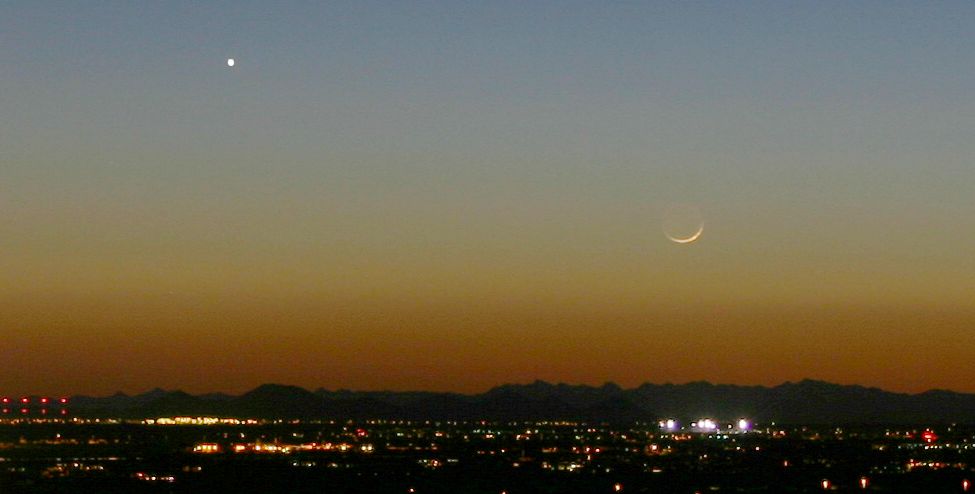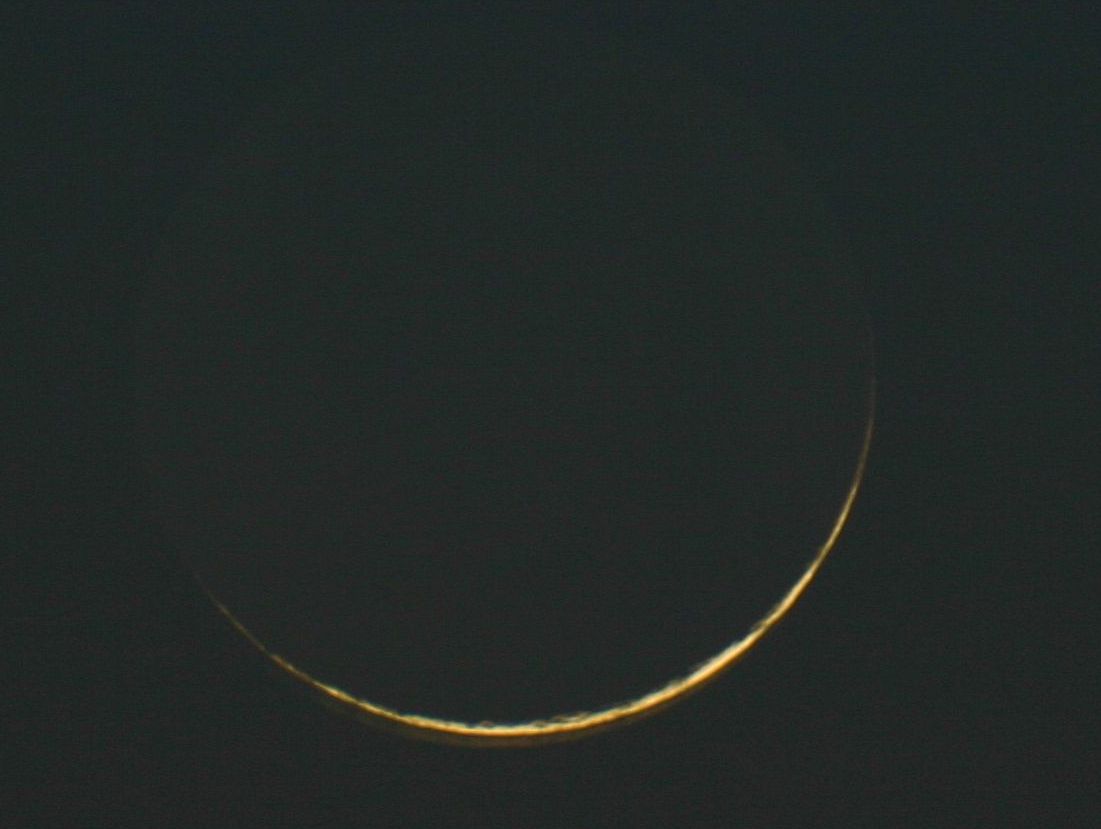
On June 7, 2005, a very young crescent Moon was visible in the evening sky accompanied by Venus. "New moon" is defined as the instant when the Moon is at the same ecliptic longitude as the Sun . This is the moment from which lunation is measured, i.e., the beginning of the Moon's cycle around the Sun. We refer to the "age" of the Moon as the number of hours (or days) since "new moon." Thus, when a thin crescent Moon is seen shortly after new moon, it is referred to as a "young moon." Trying to see an extremely young moon is a bit of a sport among amateur astronomers. Immediately after new moon, the Moon appears so close to the Sun, that it will only be seen, if at all, immediately after sunset in a bright twilight sky. At any age less than 24 hours, the Moon appears as an extremely thin crescent and is barely brighter than the low dense sky around it. The current record for sighting a young moon with the naked eye is down to about 15 hours old. The record for seeing it with binoculars is almost 13 hours, and with a telescope, down to nearly 12 hours. At that age, the crescent Moon is breathtakingly thin and very difficult to detect, and because the Moon is so close to the Sun, you will only have a few moments after sunset to attempt to see it before the thin crescent Moon itself sets below the horizon.
The top image shows the western horizon shortly after sunset with Venus shining brightly to the upper left of the crescent Moon. The bottom image was taken at the same time, and shows a close up image of the Moon. The Moon was about 29 hours old when these images were taken.

The top image was taken with a Canon EOS Digital Rebel camera mounted on a tripod with an 18-55mm zoom lens. The lower image (showing a close up of the crescent moon) was taken with the same camera at prime focus on a Takahashi FS-78 refractor at f8.
June 7, 2005
Image by Sid Leach
Scottsdale, Arizona
Recent Images.
Complete list of images.
Description of equipment used to acquire images.
Home
Feedback and comments should go to Sid